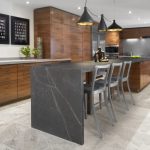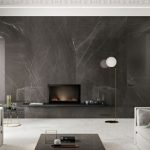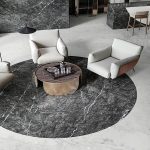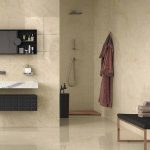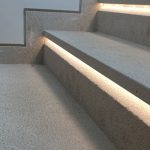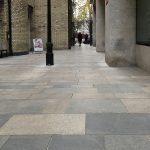Most Important Characteristics of Good Building Stones

Most Important Characteristics of Good Building Stones
When we go with what are the most characteristics of good building stone, we can call it properties of good building stone. Then there are some factors which determine the property of the good building stones. Never compromise with any factors required for good building stone.
Strength
In usual constructions the stones used are generally quite strong to withstand the forces likely to be encountered yet in case of construction where unusually bigger forces are likely to come the stone to be used should be tested for its strength. Stones of igneous class are generally stronger than those of the sedimentary class. Stones with compact fine crystalline texture are stronger.
Hardness
It is the resistance of stone to abrasive forces caused by much wear and friction as in floors, pavements and aprons of bridges and weirs in rivers. Stones to be used at such places should be hard.
Toughness
It is a measure of the impact that a stone can with stand. Stones used at places subject to vibrations of machinery and to moving loads should be tough. Stones used in the construction of roads should be hard and tough.
Ease of Working
The ease with which the stone can be worked upon i.e., cut, dressed, carved and molded etc., is an important consideration from economy point of view. But this property is opposed to strength, durability and hardness.
Porosity and Absorption
More porous building stones are unsuitable for use in construction especially for exposed surfaces of structures. Rain water while coming down carries some acidic gases forming light acids which lodge on the surface of stones and soak in them. Very often it is driven in the pores of stones by the prevailing winds. Acids react with the constituents of stones causing them to crumble. In cold regions water freezes in the pores of stones. This water causes the disintegration of stones because of its increase in volume on freezing. Stones should as such be tested for porosity and care should be taken to use more porous stones only at places where they are not likely to encounter frost, rain or moisture in any other form.
Seasoning
All freshly quarried stones contain a certain amount of moisture known as quarry sap, which makes them soft and easier to work upon. As such all work such as dressing, carving and molding etc, should be done as early after quarrying as possible. Stones become considerably harder on seasoning. After quarrying, when all the work has been done upon stones, they should be left to season under sheds having no walls so as to permit free circulation of air. Sheds protect them from rains. A period of 6-12 months is generally enough for proper seasoning. Dressed faces should not be disturbed after seasoning as the crystalline film left by the quarry sap on evaporation weathers much better than the actual face of stone left after removal of that film.
Weathering
It is the extent to which the face of a stone resists the action of weather. The best way of knowing the weathering properties of a particular stone is to inspect ancient buildings made with the same quality of stone possibly in the nearby place or at a place having similar atmospheric conditions. Inspection of an old face of some quarry could also be informative. If sharp edges and corners are preserved on an old building particularly on the faces exposed to rains and prevailing winds and on which sunlight does not play and if the chisel marks on such faces are distinctly visible then that variety of stone has good weathering qualities. Stones with good weathering properties only should be used in the construction of important buildings.

Appearance
For the face work of buildings this property is of extreme importance. From architectural point of view color of the stone should be such as to go well with the surroundings. Lighter shades should be preferred to the darker ones as the latter are less durable, Red and the brown shades of sedimentary rocks are due to the presence of oxide of iron-which, if present in excess, is liable to disfigure the stone with rust stains and to disintegrate it. Stones should be of uniform color and free from clay holes, bands or spots of color whatsoever.
General Structure
Stone, when broken in a direction other than that of cleavage, should not give dull appearance. It should show uniformity of texture. It must be either crystalline in structure of homogeneous and close-grained. In fact, stone should be free from cavities, cracks or patches of soft or loose material. For ornamental carvings it should be fine grained. Stratification should not be visible to naked eye except by difference in color. These can be easily split along their planes of stratification known as planes of cleavage, and are, therefore, useful for use in pavings, flooring’s and roofing’s etc.
Heaviness
Heavier varieties of stones are more compact, less porous and have greater specific gravities. For constructions in water, like weirs, barrages, dams, docks, harbors and for retaining walls the heavier varieties of stones are to be preferred. For construction of domes and for roof coverings and similar other usages the lighter varieties have to be used.
Resistance to Fire
To be fire-resistant stones should be free from calcium carbonate and oxide of iron and be not composed of minerals with differing co-efficient of thermal expansion.
To learn more about us, click here.
Send your price quotes directly to our WhatsApp through this Link: https://wa.link/ord5k8
Sources
civilengineering.blog/2017/11/07/characteristics-of-good-building-stone/
thetechface.org/what-are-the-characteristics-of-good-building-stone/
- Back To Articles
- best building stones, building materials, characteristics of good building stones, features of good building stones, features of great building materials, good building stones features, marble, Niayesh, NIAYESH STONE, perfect building materials, properties of good building materials, properties of good building stones
Article
Natural Stone Applications
- 22 December 2022
Iranian Stones Introduction According to Source and Quarry
- 21 December 2022
Technical Stone Introduction and Quarrying Procedures
- 21 December 2022
Categories
- blog757
- news1
- Specialized articles756

